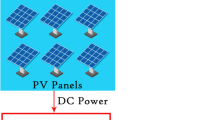Abstract
This study was performed to develop a Real-Time Risk Monitoring System which helps to do fault detection using the information from plant information systems in a chemical process. In this study, to do fault detection, principal component analysis (PCA) methods of multivariate statistical analysis were used. The fundamental notions are a set of variable combinations, that is, detection of principal components which indicate the tendency of variables and operating data. Besides classical statistic process control, PCA can reduce the dimension of variables with monitoring process. Therefore, they are known as suitable methods to treat enormous data composed of many dimensions. The developed Real-Time Risk Monitoring System can analyze and manage the plant information on-line, diagnose causes of abnormality and so prevent major accidents. It’s useful for operators to treat numerous process faults efficiently.
Similar content being viewed by others
References
AIChE/CCPS,Guidelines for Use of Vapor Cloud Dispersion Models, Center for Chemical Process Safety, AIChE, New York (1987).
AIChE/CCPS,Plant Guidelines for Technical Management of Chemical Process Safety, Center for Chemical Process Safety, New York (1995).
Dunia, R. S., Qin, J., Edgar, T. F. and McAvoy, T. J., “Identification of Faulty Sensors Using Principal Components Analysis,”AIChE J.,42(10), 2797 (1996).
Jackson, J. E., “Principal Components Analysis: Part 1 Principal Analysis,”J. Qual. Technol.,12, 201 (1980).
Kim, K. H., Shin, D. and Yoon, E. S., “Risk Analysis Using Automatically Synthesized Robust Accident Scenarios and Consequence Assessment for Chemical Processes: Process Partition and Consequence Analysis Approach,”Korean J. Chem. Eng.,20, 992 (2003).
Kim, K. S., “Development of the Real-time Risk Monitoring System for Chemical Plants,” PhD Dissertation, Kwangwoon University, Seoul (2000).
MacGregor, J. F. and Kourti, T., “Statistical Process Control of Multivariable Processes,”Contr. Eng. Pr.,3(3), 403 (1995).
Park, M. J. and Doyle, F J., “Nonlinear Model Order Reduction and Control of Particle Size Distribution in a Semibatch Vinyl Acetate/ Butyl Acrylate Emulsion Copolymerization Reactor,”Korean J. Chem. Eng.,21, 168 (2004).
Paul Geladi, Bruce R. Kowalski, “Partial Least Square Regression: A Tutorial,”Analytical Chemical Acta,185, 1 (1986).
Sohn, J. H. and Jung, S. H.,Non-linear PLS Based on Non-linear Principal Component Analysis and Neural Network, KACC (2000).
Author information
Authors and Affiliations
Corresponding author
Rights and permissions
About this article
Cite this article
Kim, KS., Ko, JW. Real-time risk monitoring system for chemical plants. Korean J. Chem. Eng. 22, 26–31 (2005). https://doi.org/10.1007/BF02701457
Received:
Accepted:
Issue Date:
DOI: https://doi.org/10.1007/BF02701457




